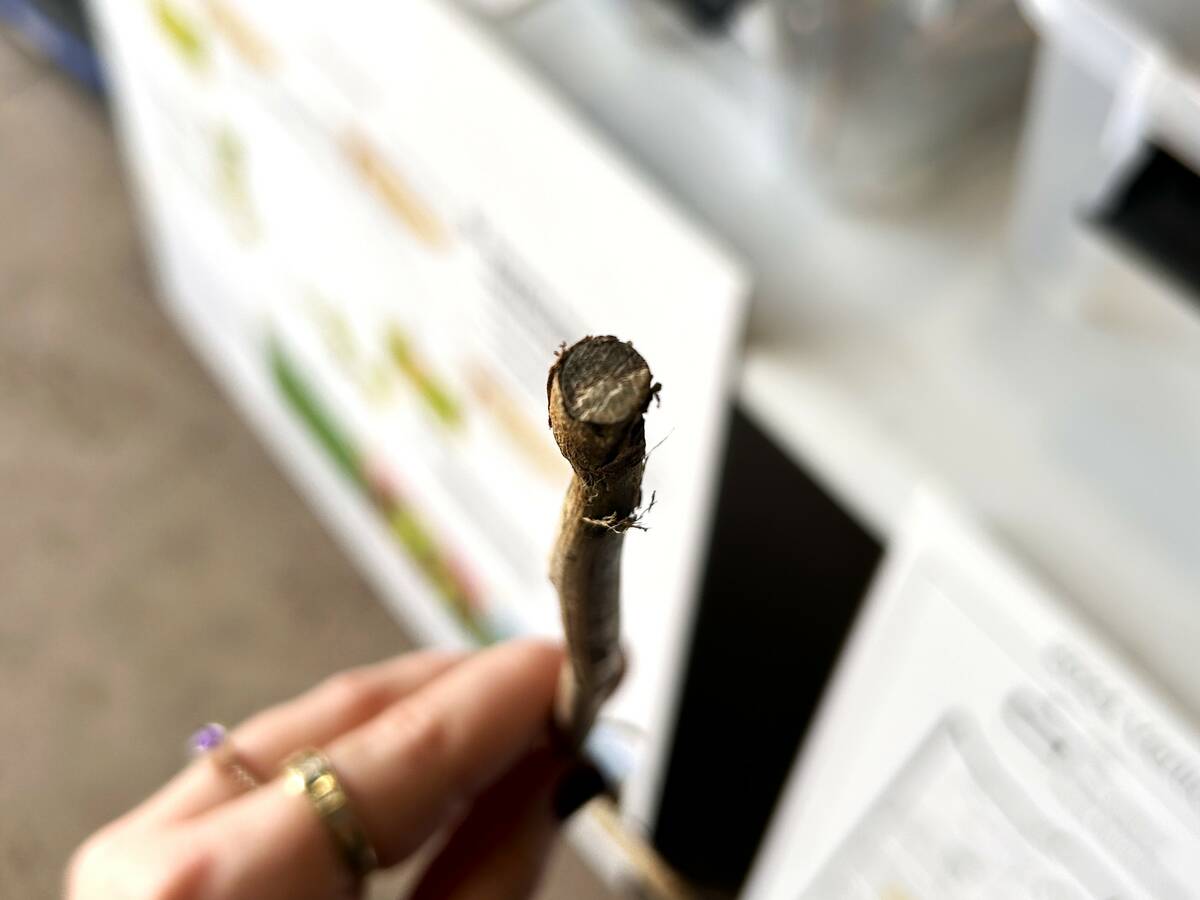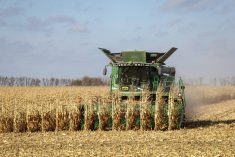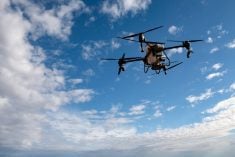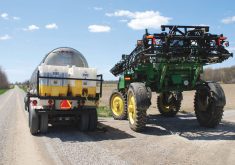If all goes according to plan, by 2027 soybean farmers throughout Canada will have new soybean varieties with tolerance to five key herbicides.
Bayer Crop Science Canada announced its Vyconic soybean trait set March 3, calling it “A leap forward in weed control, enabling farmers to manage their fields with unparalleled flexibility.”
WHY IT MATTERS: Chemical weed control has become more challenging for Canadian farmers as weeds develop resistance and winnow the list of herbicides that are both effective and that won’t hurt the crop.
Read Also

Manitoba canola embattled by verticillium
Verticillium stripe pressure has been growing in Manitoba, and canola farmers still have precious few tools to protect their crop from the disease.
Vyconic features tolerance to dicamba, glufosinate, mesotrione, 2 4-D and glyphosate.
The trait set marks a couple of “firsts,” said David Kikkert, the company’s corn and soybean portfolio lead.
“Having a trait that’s tolerant to five herbicides is an industry first in soybeans,” he said. “It’s also a first in the industry to have mesotrione tolerance as well.”
Bayer’s most recent generation of soybean traits — XtendFlex — also features dicamba, glufosinate and glyphosate. Vyconic adds two more: mesotrione and 2,4-D.
“Both herbicide active ingredients are effective against a wide range of broadleaf weeds, including kochia, fleabane, Palmer amaranth and waterhemp,” a Bayer news release noted.
Multiple actives with different modes of action can also reduce the risk of weeds developing resistance.
Several of those — kochia, Palmer amaranth and, in particular last year, waterhemp — have been flagged as serious weed worries in Manitoba, not least because of their tendancy to overcome herbicide chemistries.
“We’re excited to launch the Vyconic brand name,” said Kikkert.
“It’ll give growers great flexibility with some more modes of action to help them with their weed management.”
Vyconic has been in development for a decade and continues to be field tested.
Bayer says it will develop the overall genetic package that, combined, will become its marketed line of Vyconic soybean cultivars. The trait set will be North America-wide with a number of maturity options.
That includes triple-zero and double-zero maturity classes, those early maturing varieties targeted by markets like the eastern Prairies.
According to resources put out by the Manitoba Pulse and Soybean Growers, triple zero (000) and double zero (00) soybeans are considered best suited to Manitoba.

Next step for company’s soybean genetics
Vyconic is the latest in what Kikkert called Bayer’s “trait pipeline” for soybeans: one that started with the Roundup Ready trait, continued with Roundup Ready 2 Yield and was followed by Roundup Xtend and the aforementioned XtendFlex.
This pipeline approach builds on each new generation of traits, said Kikkert. The system will eventually include Vyconic as a jumping-off point as well.
“It’s trying to keep ahead of hard-to-control weeds, resistant weeds and allowing the flexibility for growers to use and then ultimately … have a successful crop at the end of the year.”
Rubber meets the road
Vyconic’s success will ultimately come down to the varieties it’s paired with, said Kim Brown, weed specialist with Manitoba Agriculture. In the case of Manitoba, they will have to account for the province’s short soybean growing season, for example.
Despite its earlier winter than other major soybean areas, Manitoba produced 22 per cent of all soybeans in Canada in 2023. It, Ontario and Quebec are the leading soybean-producing provinces in the nation. Soybeans are Manitoba’s third-largest crop by seeded area and farm cash receipts. In 2024, soybeans were planted on over 1.4 million acres in the province.
The herbicide mix in Vyconic is what Manitoba soybean producers need in the face of kochia, waterhemp and Palmer amaranth — all of which impact soybeans, said Brown.
“[Those] are the top weeds in the United States right now that they’re battling. And we know that waterhemp is in Manitoba. It’s moving north and west throughout the province. It’s very likely going to end up in Saskatchewan and Alberta as well, not that they grow a lot of soybeans there.
“But for sure, in Manitoba — in anticipation of the weed issues and because we’ve lost products — those groups that are in that Vyconic package are what we need moving forward to control some of the weeds that we have; either new weeds, existing weeds or emerging weed issues.”
Brown further pointed out kochia’s growing resistance in Manitoba.
“The Group 2s really don’t work on kochia, and then we’re starting to lose our Group 4s. We’re doing testing where we can, but we know that we are seeing an increase in glyphosate resistance to the point where I would just assume all kochia in Manitoba is glyphosate resistant.”

Stacking herbicides
If a certain weed is resistant to one or two herbicides in the trait stack, how does including them help? Brown said some crop protection products have synergies which — when combined together — become effective on a molecular level regardless of the weed’s resistance to the herbicides on their own.
But in other cases, stacking works because few weeds are 100 per cent resistant to herbicide. If one doesn’t work, the other herbicides may take up the slack.
Brown emphasized farm-specific management. Farmers must know what active ingredients work or don’t work in their cropping situations.
“You have to kind of look at it case by case, weed by weed, because not all of those products in there have exactly the same weed spectrum. Some are stronger on some weeds than others,” she said.
“But I think it just shows it’s getting very complex. The simple stuff doesn’t work anymore like in the days of just throwing a single product in the tank and going and spraying and walking away from the field, knowing that your weeds were going to be gone.”
Multiple herbicides, more management
Because Vyconic is a tool that enables multiple herbicide use, Brown also noted the potentially more complex herbicide management planning in order to keep herbicides in sync with rotation and avoid issues like residual damage.
“You’d have to look at sensitive crops in the rotation. You’d have to look at what crop you’re following. How do you manage your volunteers? There’s lots of things to look at when it becomes more complex that way, but it does give us more tools.”
Brown urges some caution on the use of mesotrione, a herbicide relatively new to Western Canada. Although it’s generally recommended for a low spray rate, producers may want to check with Bayer for any rate limitations attached to the Vyconic system once it’s released, she said.
















